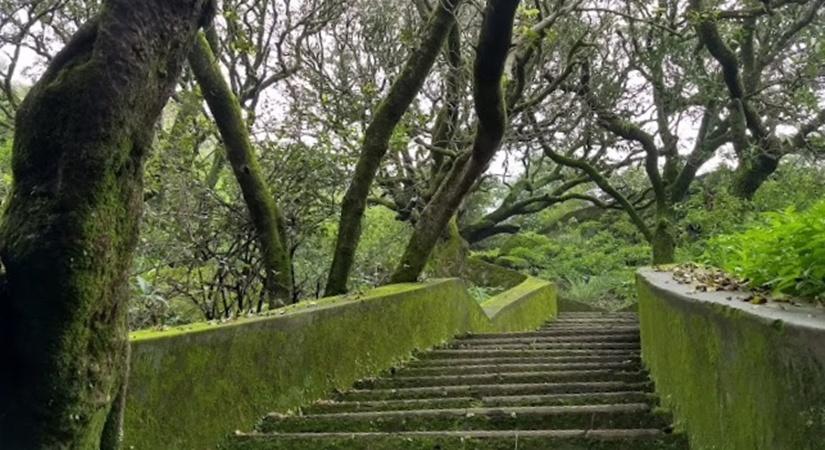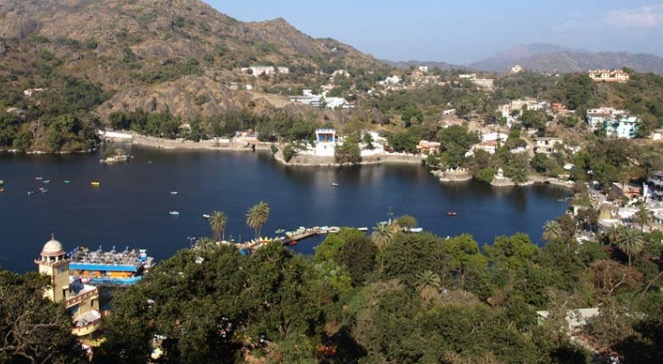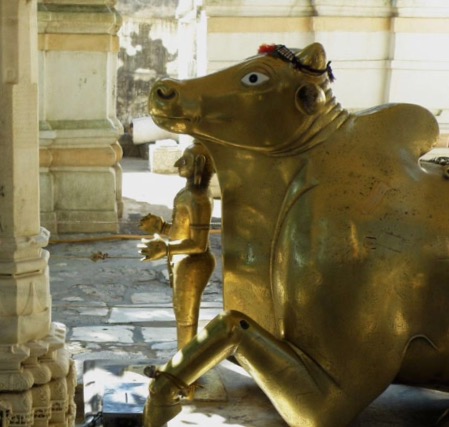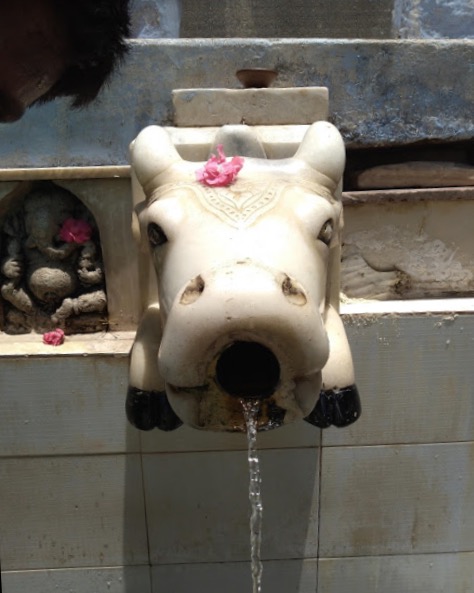Cover Story
MOUNT ABU – Rajasthan’s only hill station

Though winter is still sending shivers to most, this is the perfect time to write about Mount Abu - Rajasthan’s only hill station. At this time of the year, the crisply cold weather is perfect for invigorating walks on gentle slopes - without being disturbed by traffic. Mount Abu located 1,220 metres (4000 ft above sea level) in the Aravalli Hills, can be reached by travelling 165 km westwards by road from Udaipur
ByShona Adhikari
January 20, 2020 (IANSlife) Though winter is still sending shivers to most, this is the perfect time to write about Mount Abu - Rajasthan’s only hill station. At this time of the year, the crisply cold weather is perfect for invigorating walks on gentle slopes - without being disturbed by traffic. Mount Abu located 1,220 metres (4000 ft above sea level) in the Aravalli Hills, can be reached by travelling 165 km westwards by road from Udaipur.
Mount Abu dotted with a vast number of ancient temples, is covered with gigantic and rather weirdly-shaped rocks with curious indentations, almost as if giant fingers had left finger marks while kneading dough. Between these spectacular rocks grow date palms and flowering trees of all varieties, offering an ideal location to rest and spend a few days in communion with nature - away from the dust and cares of a busy city.
Not being a large hill station, at Mount Abu, it is almost possible to go everywhere on foot.
Most hotels and shopping areas are close to the Nakki Lake, a beautiful natural lake - that has never been known to become dry - surrounded by rocks, parks, picnic spots, and temples. There is a pleasant 4 km walk around the lake, which also offers boating.

The name 'Nakki' is derived from a legend that claims that the Gods dug out the lake with their
fingernails, or their ‘Nakh';
This entire hilly region on which Mount Abu is located, was leased by the British government from the Maharao of Sirohi, to create a summer resort for the British Resident of Rajputana Tall posts can still be seen on hilltops, made at the time to demarcate the leased area. It was, however, many years later in 1845 that a decision was taken to build a hill station, among the giant granite outcrops and scrub-covered hills.
Soon a number of private cottages, bungalows and churches were added. A polo ground was also created and all the basic necessities to make Mount Abu livable were in place. Despite being ready for visitors, it was formally listed as a hill station only in 1847, when the first group of 60 British families agreed to visit Mount Abu.
Rajput royal families soon decided this was a splendid place for holidays and built palatial residences high up on the hilltops. Most of these are still used by their descendants – either as their summer homes or by converting them into heritage hotels. The most notable among the royal homes is the Bikaner Palace, designed by the famous Swinton Jacob during the reign of Maharaja Ganga Singh. It is now known as the deluxe Palace Hotel.

The Bharatpur Palace is also a hotel and is known as Hotel Sunrise Palace.
The Jaipur Palace located high up on the hills, lay unused for years but is now also a splendid hotel. The huge Limdi Palace that dominates the skyline was planned as the largest palace in Mount Abu by H.H. Daulat Singh of Limdi. It was never completed and houses a school run by a religious trust. The Alwar Palace is also run as a school, while the Sirohi Palace, continues to be the summer residence of the royal family.
The name Abu is said to have been derived from the name 'Arbuda' the powerful serpent who rescued Lord Shiva's mount 'Nand' from a chasm. Legends tell us that many Hindu sages had their retreats on Mount Abu - the most famous being 'Vashista' who is said to have performed a 'Yagya' (a sacrificial fire) to regenerate the human race. It is said that the four 'Agnikula' (born of fire) clans of Rajputs - the Chauhans, the Solankis, the Parmars and the Pratihars, were born of this fire ritual.
The first church built in Mount Abu is the Anglican St. Lawrence Church, with its interesting stained glass windows, and carved wooden pews. Built-in 1846, the name of the church was later changed to St. Saviour's Church. The Roman Catholic Church of St Ann's built-in 1870, is a less ostentatious building with the Bishop's House situated on the hill just above it.

The Christian Cemetery has interesting tombstones, the earliest being that of Colonel W. Andrews of the 51st. Bengal National Infantry, who died on August 21 st 1858, aged 55 years. The Polo Ground was created by Maharaja Sawai Jai Singh of Jaipur in 1894, has a plaque at the pavilion (now also a library) dedicated to Col G.H. Trevor, Agent to the Governor-General of Rajputana. Named 'Trevor Oval', the plaque also states that the work is one of magnitude, as well as of public utility, the funds required for it amounting to Rs. 75,000, were kindly contributed by several chiefs in Rajputana".
Close to St. Saviour's Church is the tiny Museum and Art Gallery, built as recently as 1966. It has many stone carvings that date back to the 12th century displayed on the lawns. Inside the museum, one can see the more important pieces excavated from nearby Amravati, Achalgarh and other areas dating from the 8th to 12th century.
These are mostly carved out of granite. The Adhar Devi Temple carved out of a huge rock is dedicated to Goddess Durga, whose image lies within a cave. Situated high up on a hill, the cave can only be reached by
climbing 306 steps. Besides paying obeisance to Durga, visitors can photograph a splendid view of Mount Abu.

To the north lies the wildlife sanctuary and Trevors' Tal, a man-made reservoir constructed at a cost of Rs. 34675, by Maharao Shri Keshri Singh Bahadur of Sirohi, as a memorial to Colonel Trevor. The reservoir surrounded by natural rocks and hilly forests has become part of the sanctuary to a large number of wild animals including nilgai, sambar, jungle cats, hyenas, wild boar, and monkeys, who can be spied coming for a drink of water after sunset.
The Achalgarh fort is in ruins, but the huge Mandakini water tank with steps leading down to it is still fairly intact. The tank has three life-size granite images of buffaloes and located next to it, is the temple of Achaleshwar Maharaj, or Shiva.
The main temple has ornately carved marble pillars, and an entrance cupola, with 16 female figures representing the different aspects of learning and the arts. In front of the temple, a brass Nandi bull is an
object of worship and a popular backdrop for photographs.

One of the most important spots for visitors is the Gaumukh Temple, reached by descending 700 steps it is located next to sage Vashishta's ashram. Here a stream of water gushes out from the mouth of a marble cow from which its name was derived.
Mount Abu offers a number of spots where visitors may enjoy watching sunsets or looking out over splendid panoramic views of the surrounding hills, plains and valleys. The highest point in the Aravallis and in Rajasthan is Guru Shikhar, 15 km from Mount Abu at a height of 1772 metres. Sunset Point finds tourists making the most of photographing the splendid the sight of the setting sun behind the hills.

(This article is a website exclusive and cannot be reproduced without permission of IANSlife)
Shona Adhikari is a lifestyle and travel columnist.


